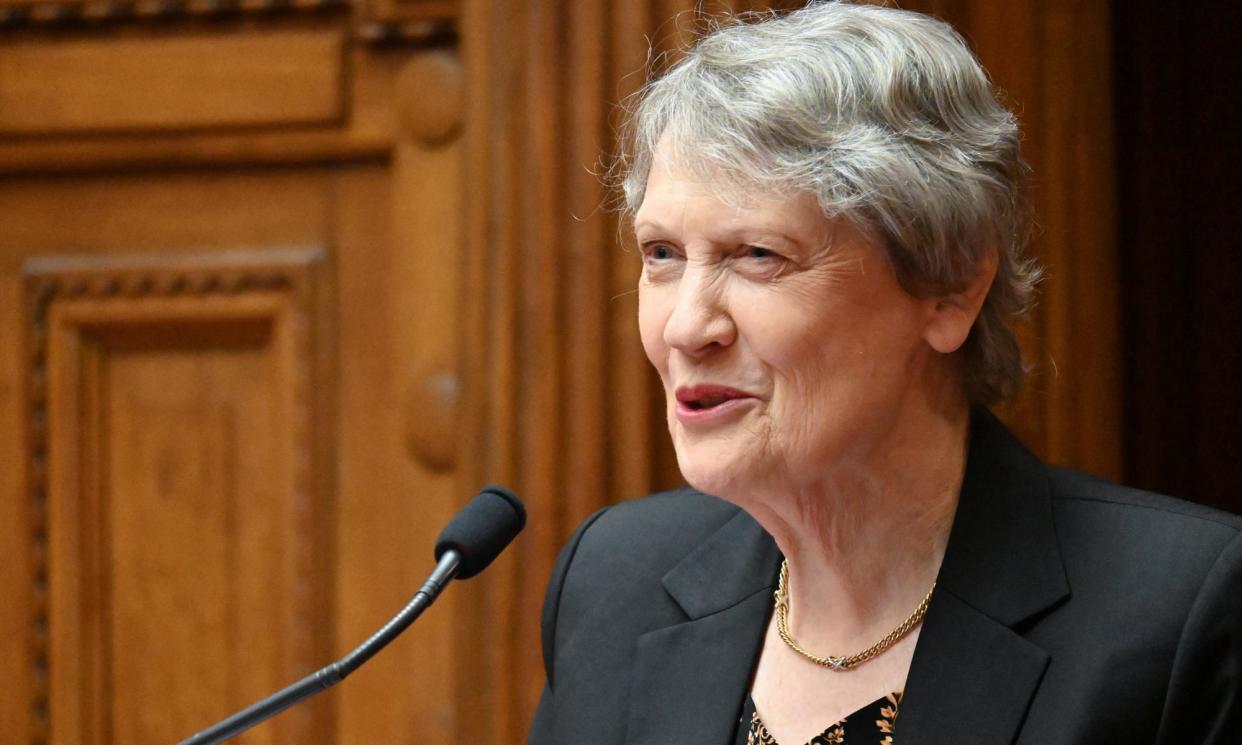Experts warn of influx of synthetic opioids amid calls for second Melbourne injecting room

Health experts are warning of the looming threat of strong synthetic opioids called nitazenes among Australian drug users, as former New Zealand prime minister Helen Clark said there was an urgent need for a second safe-injecting room in Melbourne.
Referring to the long-mooted facility, Clark, who is the chair of the Global Commission on Drug Policy, said: “The bottom line is that people that are using drugs need to be safe.
“And that’s why a centre is so important … I hope it will go ahead. The first one is clearly highly successful,” she said.
Speaking at the World Health Summit regional meeting, Clark said there was a need for drug decriminalisation, public drug-testing facilities and safe-injecting sites to get ahead of what was described as the imminent threat posed by synthetic opioids, which are already causing an epidemic of drug fatalities in North America.
Strong synthetic opioids called nitazenes have already been identified in the ACT, New South Wales, Victoria and South Australia. Certain nitazenes can be from 10 to 100 times more potent than fentanyl, which is also a powerful synthetic opioid.
Because of their potency, compared with natural opioids such as heroin or morphine, they can be much more addictive and more dangerous. In January, the chief executive of the nation’s only pill-testing venue in Canberra, Chris Gough, said the detection of nitazenes in pills sold as MDMA showed the need for similar services in other states.
The head of Harm Reduction Victoria, Sione Crawford, said nitazenes were a challenge due to the limited understanding of their effects, and detection in stimulant drugs and falsified pharmaceuticals.
Community drug-testing sites, increasing supervised drug consumption facilities, and expansion of take-home naloxone with overdose education were key to preventing “a skyrocket” of overdoses from such synthetic drugs in Australia, he said.
“It’s very easy to recognise these drugs if you’re able to take your drugs to services for testing,” Crawford said.
He said without such services, it’s only after “some kind of disaster” with deaths at a festival that synthetic drugs are identified as the cause. He called for governments to act before more synthetic drugs make their way into the illicit market.
“That means legalisation and being able to have a more stigma-free conversation, so people know that they’re not going to get arrested.”
In March, the Victorian coroner’s court released a warning that since 2021, at least 16 fatal overdoses in the state had involved nitazenes, with many due to the drug being used to cheaply cut drugs like heroin or MDMA.
It came as experts continued their calls for the Victorian government to open a second injecting centre in Melbourne.
In 2020 an independent expert panel recommended a second safe drug injecting facility to take pressure off the North Richmond service, which had become the busiest in the country.
The government responded by announcing it would open one in the CBD and commissioned former police commissioner Ken Lay to investigate where it should be located. Community backlash has led to difficulties finding a site.
Related: Opioid overdose deaths to ‘grow exponentially’ without action – study
Lay handed his report to the government in May 2023, but it has yet to be published. Victorian premier, Jacinta Allan, has committed to releasing it before the end of the year.
Clark said decriminalisation was needed to reduce the stigma around pill-testing and safe-injection sites and to prevent further deaths.
“We’re talking about human beings, we’re talking about those who may be siblings, cousins, parents, people who have needs for harm reduction,” Clark said.
“Throughout human history human beings have resorted, for whatever reasons, to various kinds of substances which take them out of their reality. So the issue for us is to deal with that reality and say, ‘what can be done in societies to ensure that we make those choices are safe?’.”
She called for a change to the United Nations (UN) drug conventions, which she said focused too heavily on law enforcement approaches and perpetuated stigma.
“I grew up thinking the UN was the gold standard,” Clark said. “The convention in the drug area is the single exception to this.”


